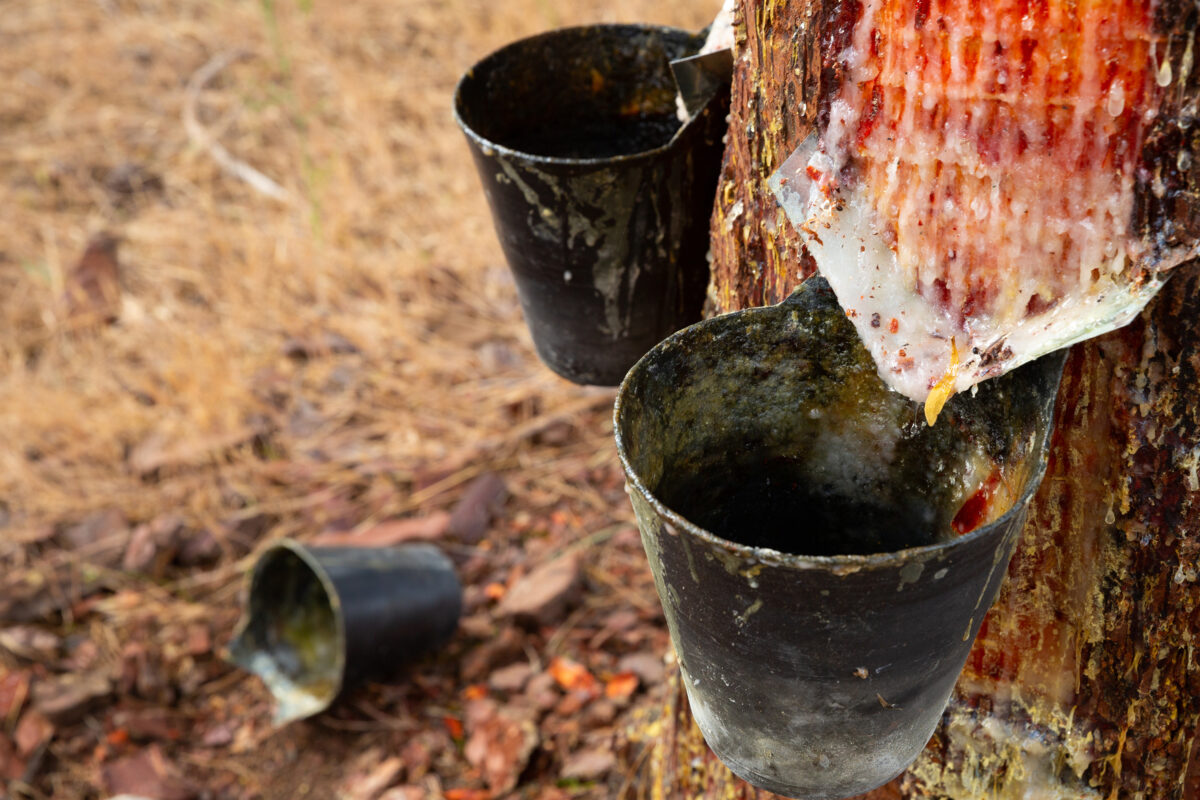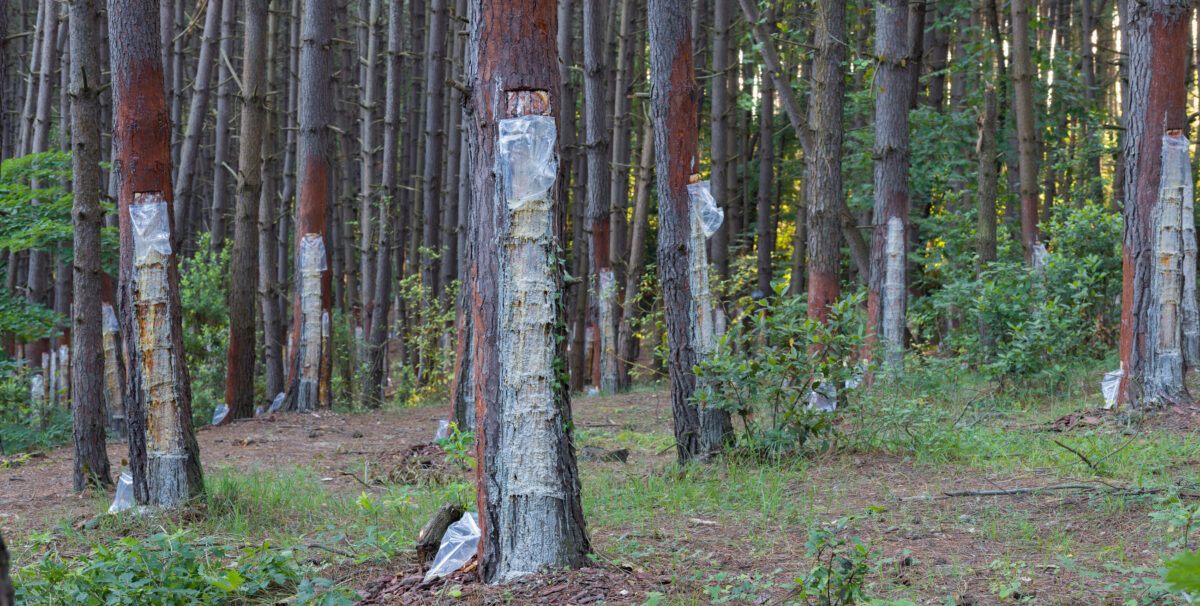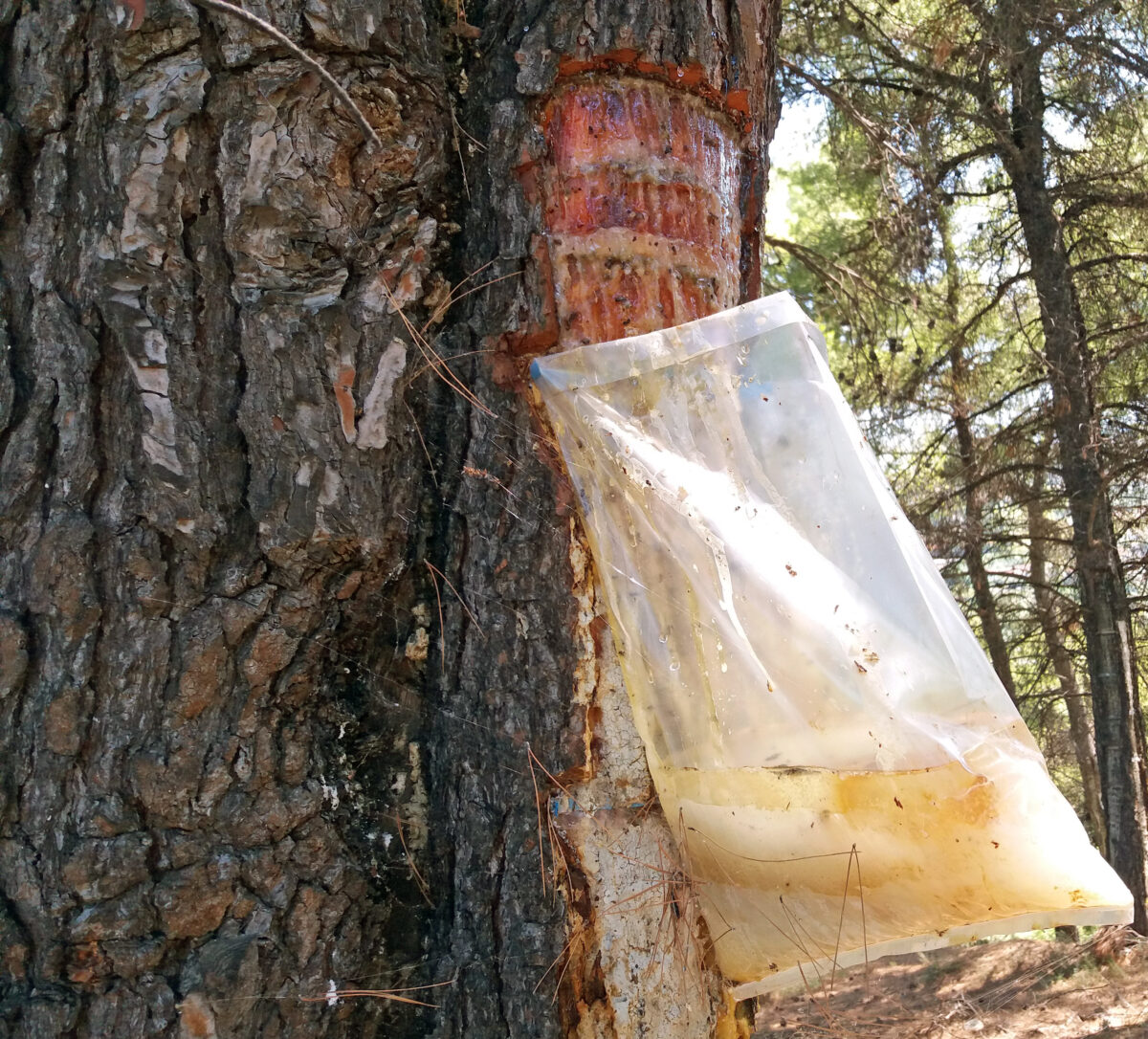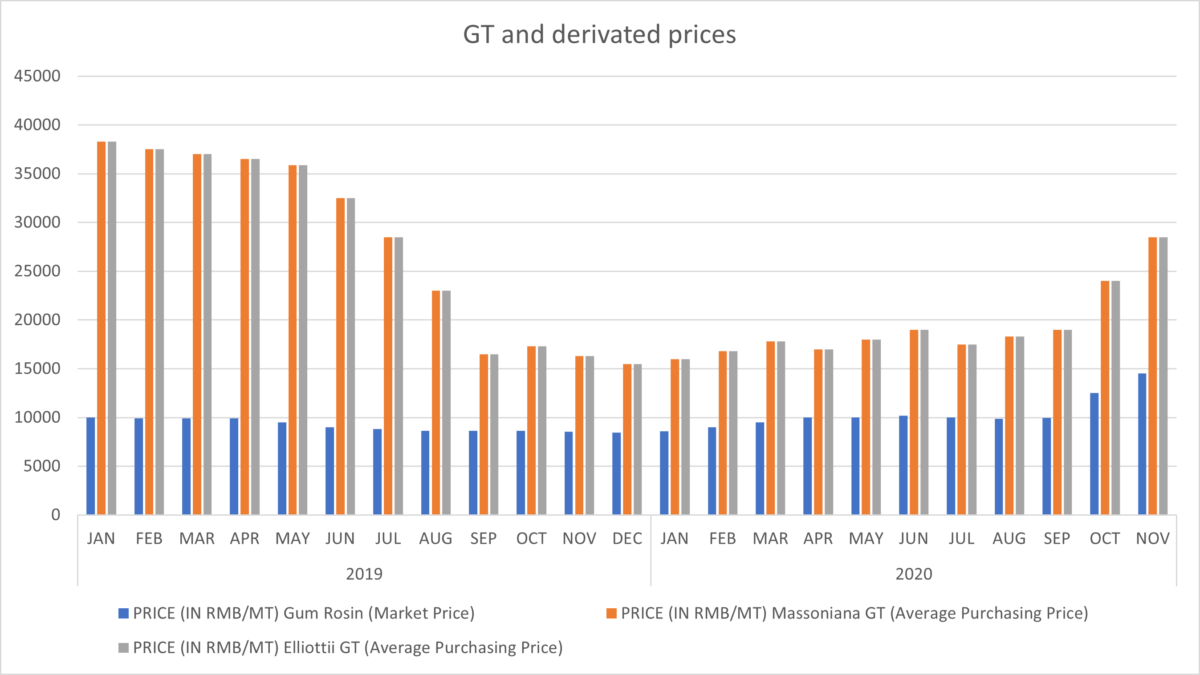Turpentine oil or simply Turpentine is a volatile oil obtained by the distillation of resin harvested from living pine trees. The solid material which is left behind after the distillation is named Rosin or Colophony.
Turpentine appears as a colorless, light, volatile, strong-smelling, and burning-tasting liquid. It is composed of a mixture of terpenes.
The major component is Alpha-pinene (up to 70%) followed by Beta-Pinene (5-30%), Delta Carene (5-20%), Camphene (up to 2%), Dipentene/Limonene, Terpinolene, and other Terpenes.

The composition depends on the species of Pine from which it is harvested. Main sources of Chinese Turpentine are Masson’s Pines (Pinus Massoniana, hence the name Massoniana GT) and slash pine (Pinus elliottii, hence the name Elliotti GT)
Turpentine has been used as disinfectants, insecticides, solvents, and cleaning in the paint industry.
Nowadays it is used in the Pharmaceutical and Perfumery industry as a source of chemical products. It is one of the major sources for the production of derivatives for the Flavours and Fragrances industry, like Camphor, Borneol, Terpineol, Dihydromyrcenol, Isobornyl acetate, and many others.
Pure Alpha and Beta Pinenes are obtained by fractional distillation of Turpentine. Both are then used as raw materials to produce synthetic products like Dihydromyrcenol or Iso e Super.

Currently, there are two methods to obtain Turpentine.
- Gum Turpentine (GT) comes from the distillation of tree resins obtained via the tapping of living pine trees.
- Crude Sulfate Turpentine (CST) is recovered as by-products from chemical pulping of pines, it is basically extracted from wood chips. During the Kraft process (also known as sulfate process) wood chips are converted to wood pulp (almost pure cellulose fibers, the main component of paper), by treating them with a hot mixture of water, sodium hydroxide, and sodium sulfide in order to break the bonds that link lignin and cellulose. CST is a by-product of this process.

Compared with GT the advantages of CST are lower cost and stable supply. Meanwhile, the disadvantage is the more complex production process. To avoid the unpleasant odor of sulfur, desulfurization is necessary.

North America and Europe dominate the market of CST Turpentine. Until now, the CST is still not widely used in Asia. The derivatives of turpentine produced in Asia are mainly from GT meanwhile in the US and Europe they are mainly from CST.

Southern China (particularly the provinces of Yunnan, Fujian, Guangdong, Guangxi, and Jiangxi) is the major producer of GT Turpentine, followed by Indonesia, Vietnam, Brazil, Mexico, and India.
The French district of Landes, Portugal, and Spain are the main sources in Europe.
Start from August 2020 we have experienced a price increase of Gum Turpentine in Asia, the price went from 2600 USD/MT to 4300 USD/MT, an increase of more than 70%.
There are two major reasons for the increase.
- One is that the price of Gum Turpentine was low for the last 12 months and thus farmers were not interested in harvesting at such a low price.
- The second was the COVID-19 Pandemic, which has removed the workforce during the harvesting season, particularly in Brazil and India.
The supplier of CST and CST derivatives take advantage of the situation to increase the price. Consequently, the prices of all derivatives go up. In September just very moderately, but as soon as the end-users and distributors low-cost stocks have run out, and the major companies of the Flavours & Fragrances industry started to discuss the 2021 contracts, the price increase began to accelerate. Alpha Pinene price (1 FCL, CFR EMP) increase from just less than 4 USD up to 5.8 USD/kg. Terpineol PG is already above 8.2 USD/kg, Iso e Super above 8.5 USD/kg, Camphor above 12.8 USD/kg. The GT shortage will continue at least till the Chinese New Year (12th February 2021) and in case the World Economy would recover after the COVID-19 Pandemic, the price could further increase. We recommend you to pay attention to the market.
Contact us for more information and to request an offer for turpentine derivates
